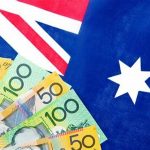Japanese yen edged higher against the US dollar, but it lacked bullish conviction.
The Japanese yen (JPY) fails to profit on a minor Asian session rise, hovering at its lowest level since early August against the US dollar. Which reached on Wednesday. Exports in Japan fell for the first time in ten months in September, according to data released on Thursday, raising fears about global demand weakness. This comes on top of an unexpected opposition to future rate hikes by Japan’s. Prime Minister Shigeru Ishiba may complicate the Bank of Japan’s (BoJ) intentions to leave years of ultra-easy monetary policy, which has capped the JPY.
The JPY capped by uncertainties over the Bank of Japan’s rate rise plan and a bullish risk tone.
A generally bullish tone in the equities markets is viewed as a headwind for the safe-haven JPY. The US Dollar (USD) trading near its highest level in over two months, with predictions that the Federal Reserve (Fed) will lower interest rates gradually over the next year. This puts the yield on the benchmark 10-year US government bond over 4% and further weakens the low-yielding JPY, allowing the USDJPY pair to reverse a minor intraday drop and trade around 149.50-149.55.
Daily Digest Market Movers: Japanese yen bulls stay on the sidelines amid BoJ uncertainty and a strengthening dollar.
According to a Reuters survey, a tiny majority of experts believe the Bank of Japan will not raise interest rates again this year due to uncertainties about the new government leadership’s monetary policy preferences.
According to data released by Japan’s Ministry of Finance on Thursday, total exports fell 1.7% year on year in September, compared to a corrected 5.5% increase the previous month and missing consensus predictions.
Soft demand in China, Japan’s largest trade partner, and sluggish US growth, along with the JPY’s recent rise following the Bank of Japan’s unexpected interest rate hike in late July, pulled export values down.
This may further complicate the The BoJ’s rate hike plans will cap any major appreciation for the JPY, however persisting geopolitical worries from protracted wars in the Middle East may provide support.
The United Nations (UN) reported that Israeli forces fired on its peacekeeping post in southern Lebanon, forcibly entered a facility, halted a key logistical operation, and injured more than a dozen of its troops.
According to a person acquainted with the situation, Israel’s counterstrike plan in reaction to Iran’s October 1 attack is ready, heightening the potential of further escalation of Middle Eastern tensions and a regional conflict.
Bets of lower Fed rate reduction strengthen the USD and lend support to USDJPY.
On Wednesday, the US dollar surged to its highest level since early August, amid firming expectations for a less aggressive policy easing The Federal Reserve expected to decrease interest rates by 25 basis points at its November meeting.
The yield on the benchmark 10-year US government bond fell to more than a one-week low on Wednesday, but it still maintains the 4.0% level, which supports USD bulls and could boost the Japanese yen pair.
Traders turn to the US data calendar, which includes the publication of monthly Retail Sales, Weekly Initial Jobless Claims, and the Philadelphia Fed Manufacturing Index, for some momentum later in the North American day.









